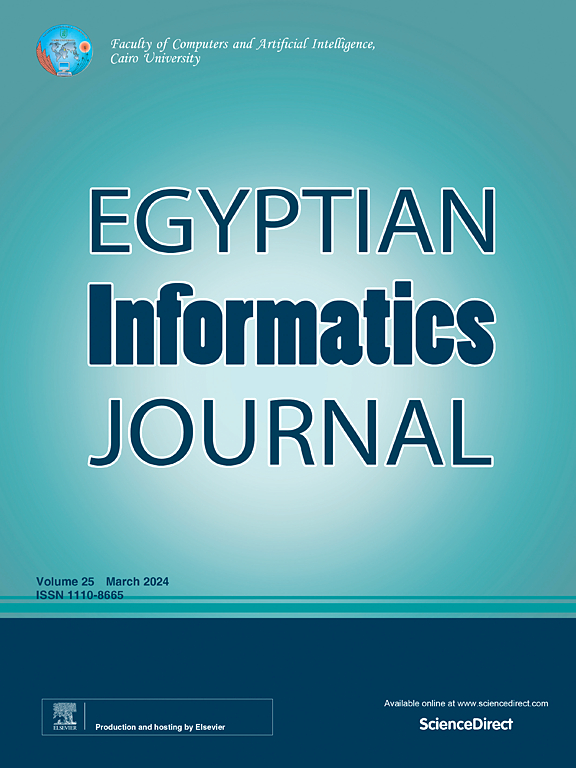Task scheduling in fog computing systems using deep learning
IF 4.3
3区 计算机科学
Q1 COMPUTER SCIENCE, ARTIFICIAL INTELLIGENCE
引用次数: 0
Abstract
Optimal resource allocation is one of the fundamental challenges in fog computing systems. In this paper, a novel deep learning method is proposed for efficient task allocation and scheduling in fog computing systems. The proposed method consists of a three-phase structure. In the first phase, a stable communication structure between network components is established using a minimum spanning tree structure based on the distance between nodes. In the second phase, a deep neural network is used to determine the appropriate computational resources for each task, in which task characteristics and processing resources are analysed as inputs and the priority of assigning the task to each resource is determined. And finally, in the third phase, after assigning each task to resources, the order and processing time of the tasks are determined separately using an improved version of the round-robin algorithm, and this is done based on the dependencies between tasks. To check our method, we performed experiments by changing the number of running tasks and by altering the average time needed to complete each task. The method is measured against well-known algorithms such as enhanced round-robin, particle swarm optimization and deep reinforcement learning for multi-objective scheduling. The experiments conducted and the values obtained in terms of response time, turnaround time and waiting time show that the proposed method has achieved 9.96 %, 7.80 % and 8.69 % improvements in the first scenario, respectively. Moreover, in the second scenario, these successes have increased to 20.25 %, 8.94 %, and 7.33 %, respectively. These results represent the high efficiency of the proposed method for the optimization of different times and performance improvement of a system under various conditions.
基于深度学习的雾计算系统任务调度
优化资源分配是雾计算系统面临的基本挑战之一。本文提出了一种新的深度学习方法,用于雾计算系统的高效任务分配和调度。该方法由三相结构组成。在第一阶段,基于节点之间的距离,采用最小生成树结构建立网络组件之间稳定的通信结构。在第二阶段,利用深度神经网络确定每个任务的适当计算资源,其中分析任务特征和处理资源作为输入,确定任务分配给每个资源的优先级。最后,在第三阶段,将每个任务分配给资源后,使用改进版本的轮循算法分别确定任务的顺序和处理时间,这是基于任务之间的依赖关系完成的。为了验证我们的方法,我们通过改变运行任务的数量和改变完成每个任务所需的平均时间来进行实验。该方法与多目标调度的增强型轮循、粒子群优化和深度强化学习等著名算法进行了比较。实验结果表明,在第一种情况下,该方法的响应时间、周转时间和等待时间分别提高了9.96%、7.80%和8.69%。此外,在第二种情况下,这些成功率分别增加到20.25%、8.94%和7.33%。这些结果表明,所提出的方法对不同时间的优化和系统在不同条件下的性能提高具有很高的效率。
本文章由计算机程序翻译,如有差异,请以英文原文为准。
求助全文
约1分钟内获得全文
求助全文
来源期刊

Egyptian Informatics Journal
Decision Sciences-Management Science and Operations Research
CiteScore
11.10
自引率
1.90%
发文量
59
审稿时长
110 days
期刊介绍:
The Egyptian Informatics Journal is published by the Faculty of Computers and Artificial Intelligence, Cairo University. This Journal provides a forum for the state-of-the-art research and development in the fields of computing, including computer sciences, information technologies, information systems, operations research and decision support. Innovative and not-previously-published work in subjects covered by the Journal is encouraged to be submitted, whether from academic, research or commercial sources.
 求助内容:
求助内容: 应助结果提醒方式:
应助结果提醒方式:


